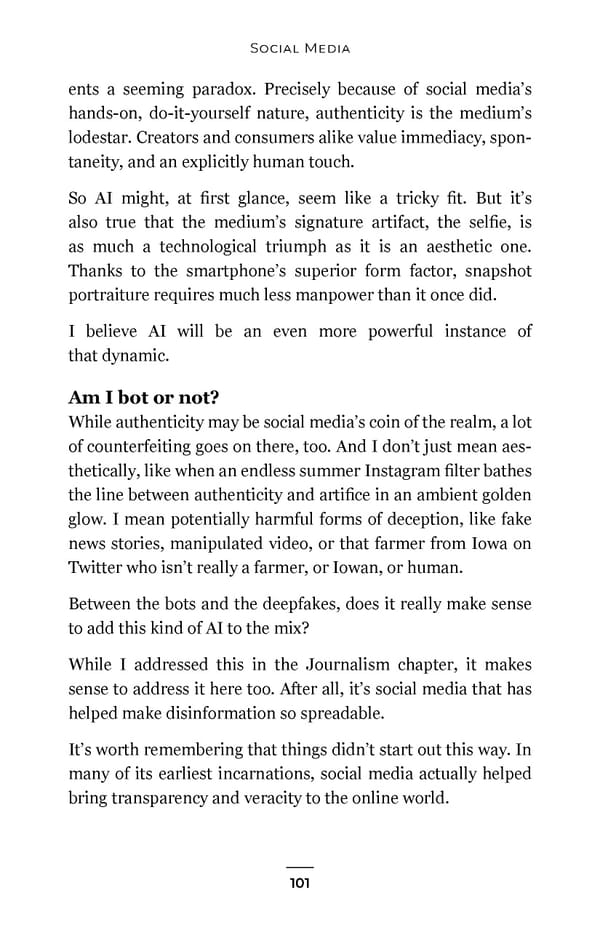Social Media ents a seeming paradox. Precisely because of social media’s hands-on, do-it-yourself nature, authenticity is the medium’s lodestar. Creators and consumers alike value immediacy, spon- taneity, and an explicitly human touch. So AI might, at first glance, seem like a tricky fit. But it’s also true that the medium’s signature artifact, the selfie, is as much a technological triumph as it is an aesthetic one. Thanks to the smartphone’s superior form factor, snapshot portraiture requires much less manpower than it once did. I believe AI will be an even more powerful instance of that dynamic. Am I bot or not? While authenticity may be social media’s coin of the realm, a lot of counterfeiting goes on there, too. And I don’t just mean aes- thetically, like when an endless summer Instagram filter bathes the line between authenticity and artifice in an ambient golden glow. I mean potentially harmful forms of deception, like fake news stories, manipulated video, or that farmer from Iowa on Twitter who isn’t really a farmer, or Iowan, or human. Between the bots and the deepfakes, does it really make sense to add this kind of AI to the mix? While I addressed this in the Journalism chapter, it makes sense to address it here too. After all, it’s social media that has helped make disinformation so spreadable. It’s worth remembering that things didn’t start out this way. In many of its earliest incarnations, social media actually helped bring transparency and veracity to the online world. 101
 Impromptu by Reid Hoffman with GPT-4 Page 107 Page 109
Impromptu by Reid Hoffman with GPT-4 Page 107 Page 109